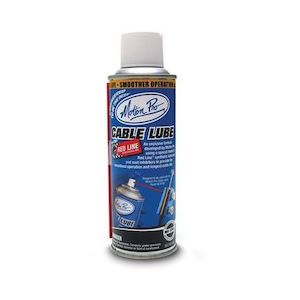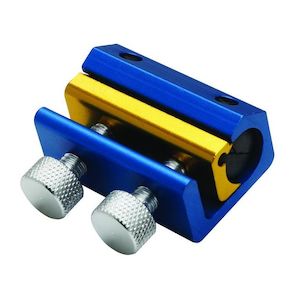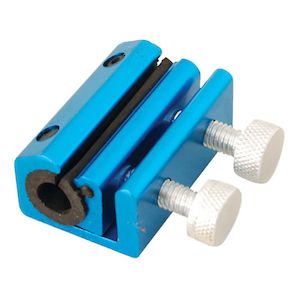Your motorcycle probably uses a cable or two for the throttle and/or clutch. On older machines, you might have cables for the choke, decompression lever, or brakes. Cables of any kind need occasional lubrication for best performance and longevity, but what’s the best tool for the job?
There are several ways to attack this problem. They range from nearly free to nearly $30 for various levels of convenience; count on buying a can of cable lube for any of them if you don’t already have one. Alternatives like WD-40 just don’t cut the mustard long-term.
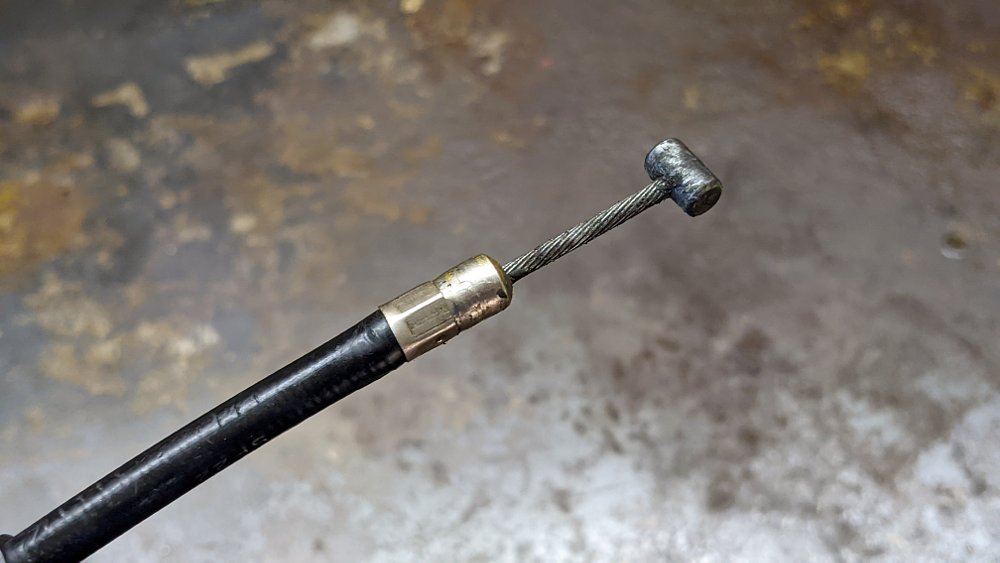
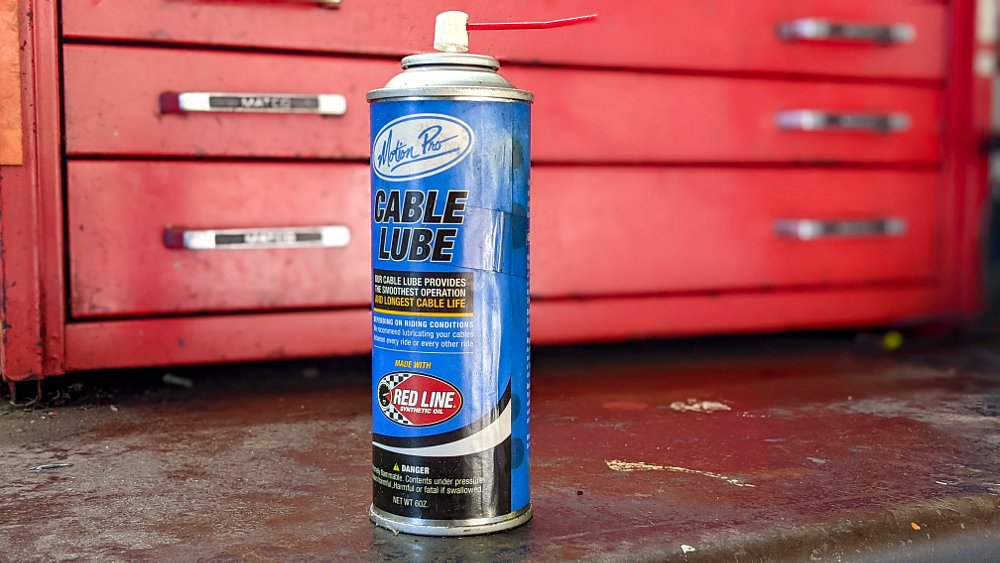
Here are four options I’ve used around the shop. I’ll rate each for function, speed/pressure, and ease of use/cleanliness. I’ll let you decide what you’re willing to pay, but my recommendations will be in the conclusion.
Plastic bag with a hole in the bottom: $0
Function: ★★★☆☆
Speed/Pressure: ★☆☆☆☆
Ease/Cleanliness: ★★★☆☆
Most grease monkeys like me started out with the ol’ plastic bag trick. It’s a bit messy if you aren’t careful and it only has the power of gravity to push the lubricant into the cable. So what? It’s basically free.
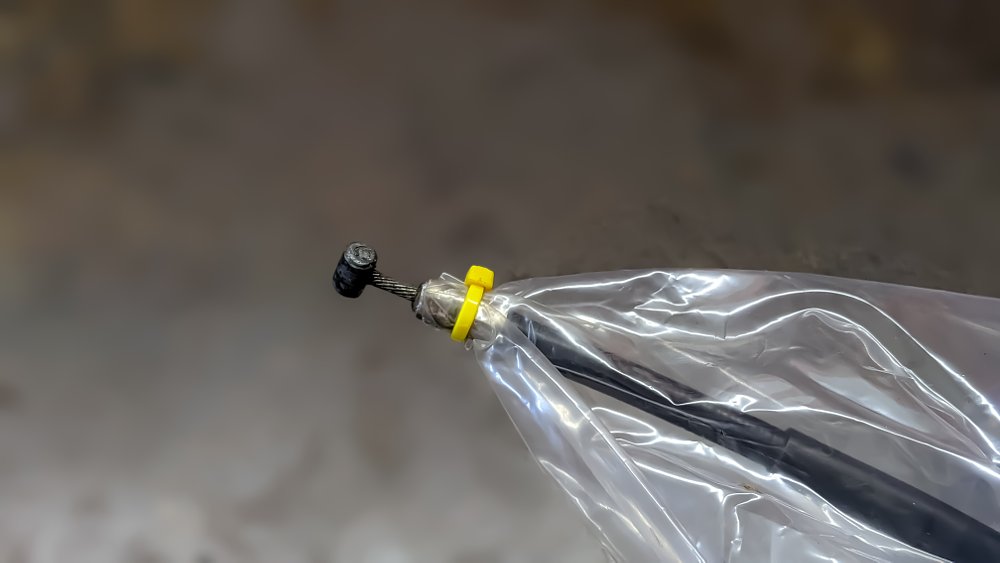
Find a decently sturdy plastic bag, like a freezer bag or even the bag your cables came in, and cut a little hole in the bottom. Push the cable up through the hole so that the cable end is poking out of the bottom of the bag. Seal the bag to the cable ferrule with a zip tie or some rubber bands. Now pull the bag inside-out so that the cable end is inside. Presto, free cable lube tool. It works like a funnel to direct cable lube into the sheath.
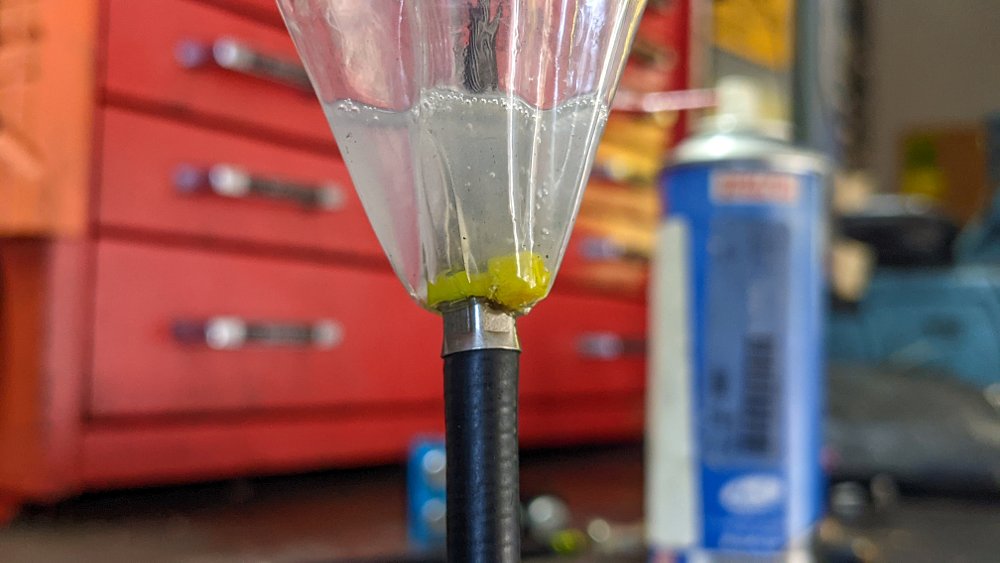
Hold the cable above the other end and squirt some cable lube into the bottom of the bag. It should drain into the cable itself, working its way to the other end. Work the cable end to make sure it feels smooth, then wipe off the ends, dispose of the bag, and reinstall. This method works best with cables in decent condition. Dirt bikes and other motorcycles ridden off-road might be better off with one of the other methods. The test cable felt better, but far from perfect, after this treatment.
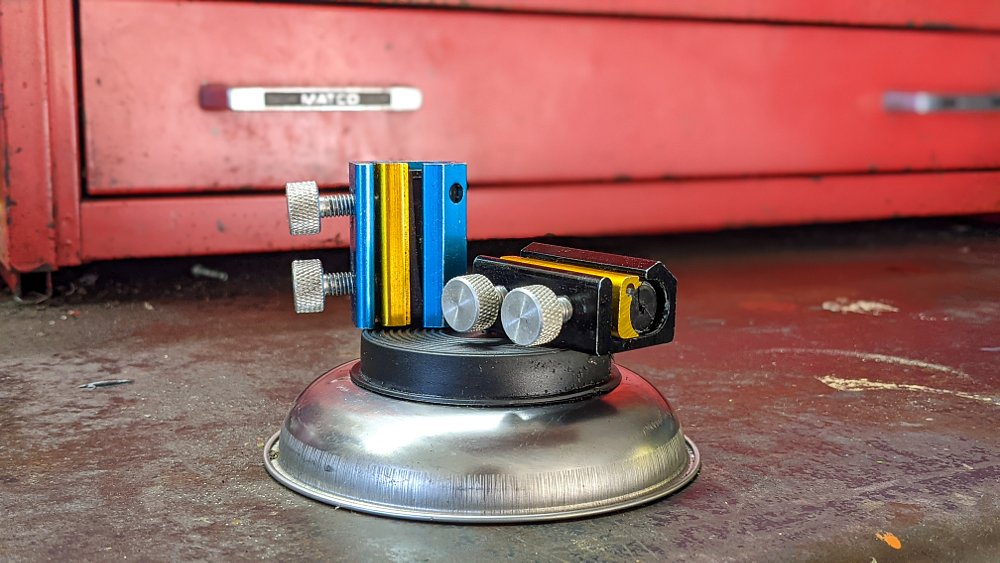
Clamp-type luber: $10
Function: ★★★★☆
Speed/Pressure: ★★★★☆
Ease/Cleanliness: ★★★★☆
The classic cable lube tool you’ll find in most garages is the Motion Pro Cable Luber. This little device clamps onto the cable with a rubber seal that allows pressurized lube from the can to blast into the cable sheath, speeding up the job and pushing out debris. Many other manufacturers offer similar versions of the same tool. My Motion Pro and my clone both work about the same.
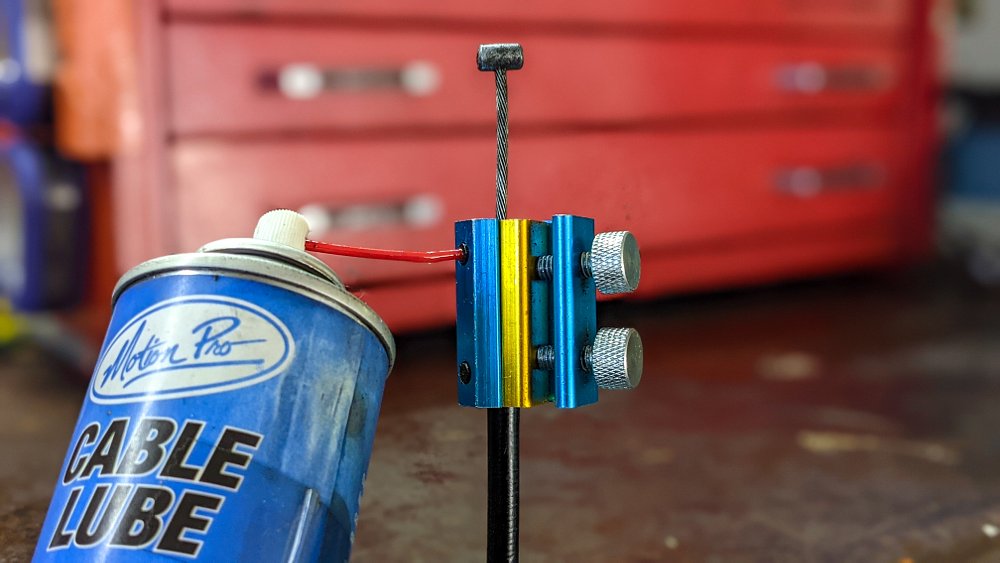
To use, pull the ball end out of the cable as far as possible. Open the thumbscrews on the lube tool, push the cable into the rubber seal with the ball outside the end with the smaller hole, and slide the tool down until it is sitting on the ferrule. Crank down on the screws to lock the tool in place. A little hole in the seal accepts the lube can’s straw, so pop it in and spray until lube runs out the other side of the cable.
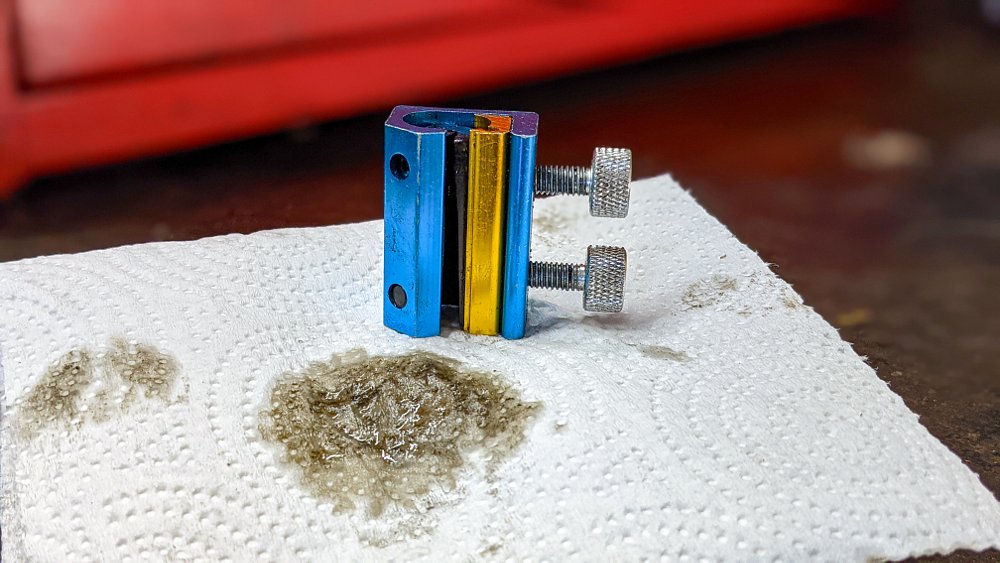
These $10 tools do a much better job than the bag. Most riders will be fine with a setup like this. It’s a bit of a mess if the tool doesn’t seal quite right, though.
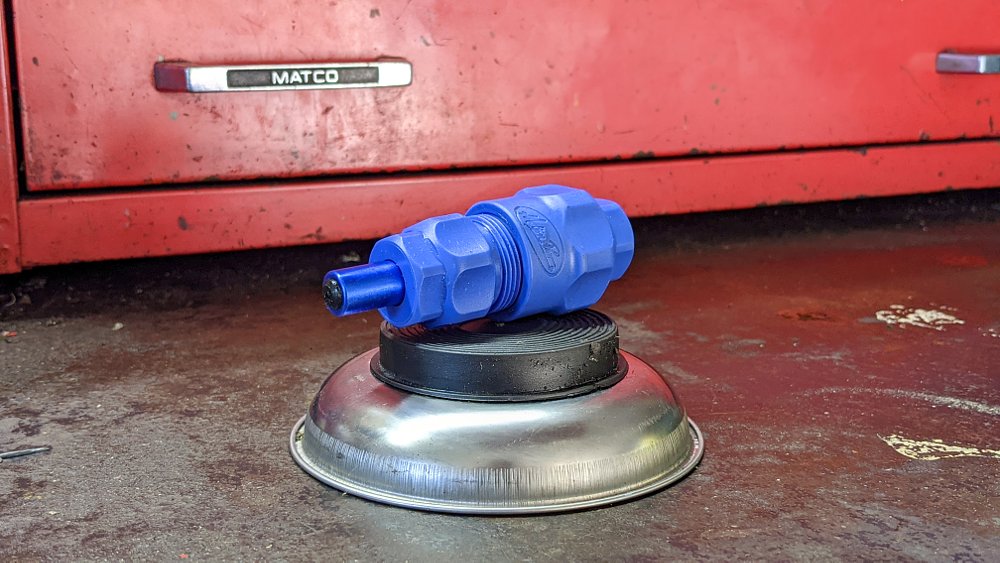
Motion Pro Cable Luber V3: $26
Function: ★★★★☆
Speed/Pressure: ★★★★★
Ease/Cleanliness: ★★★★☆
After years of using the standard Motion Pro tool, I thought I’d try the new V3. Although it mostly uses plastic construction instead of the blingy anodized aluminum of the old version, it produces the most pressure and the least mess. It also costs twice as much as the standard version.
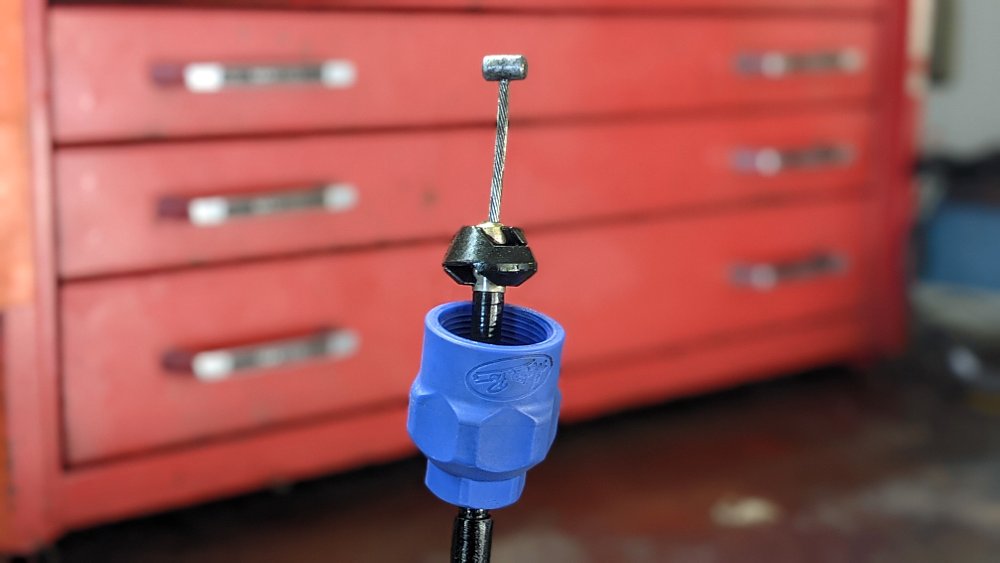
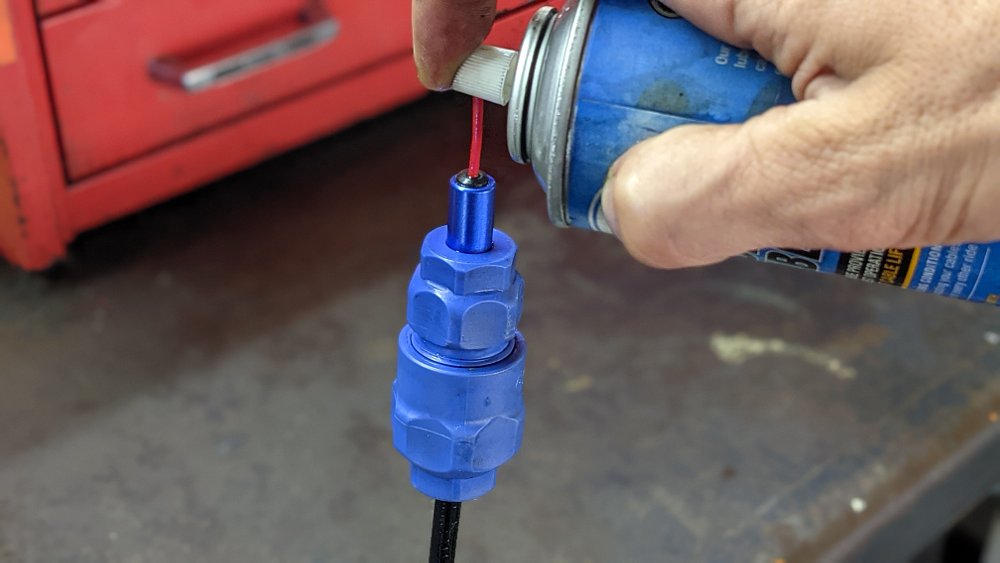
Slide the locking nut onto the cable, then push the rubber seal onto the ferrule. Make sure the longer side points towards the ball end. Thread the tool onto the nut to squish the seal against the ferrule. Attach the lube can and spray away. Once the other cable end leaks lubricant, remove the tool and wipe it clean.
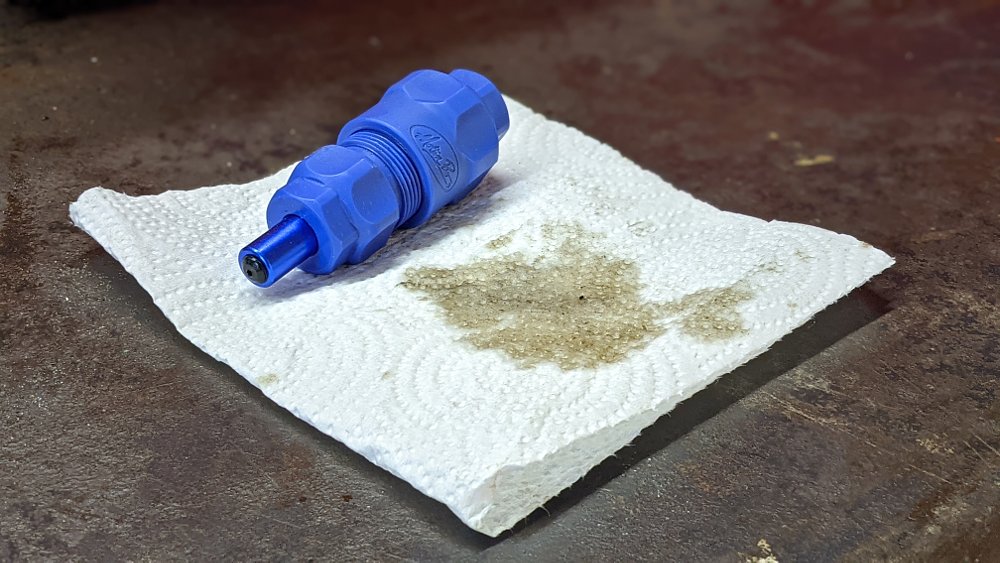
Cable replacement: $25-??
Function: ★★★★★
Speed/Pressure: ★☆☆☆☆
Ease/Cleanliness: ★☆☆☆☆
Sometimes you need a new cable, not a new tool. This is always the most labor-intensive option. For your trouble, you get the absolute best cable action possible. Some modern cables are even Teflon-coated on the inside, and the manufacturers will tell you they do not need lubrication of any kind. This is a subject of some debate. Just know that they're available.
Standard cables typically come without lubricant. Don’t forget to add some before installation if required. The bag method should be easy when cables are fresh.
Which motorcycle cable lube tool is best?
The classic clamp-on lube tools are worth the money for most DIYers. Personally, my go-to is the V3 tool after using one in my home shop over the last month. Keep in mind that I’m lubricating cables several times a year as I keep up with my fleet of questionable motorcycles, including several dirt bikes regularly ridden in sand. I use the bag method for improv repairs these days.
No matter which method you prefer, don’t slack on cable maintenance. (Check out Ari's complete guide here.) This isn’t merely a matter of that new bike feel. All controls on a motorcycle are critical, and improperly lubed cables can bind or snap in the absence of motion lotion. Give them basic attention, and you should have many trouble-free miles of motoring.













